A rolling shutter roll forming machine is the unsung hero behind the ubiquitous rolling shutter doors seen in warehouses, shops, and industrial facilities. This industrial marvel automates the production of the interlocking slats that form these secure closures.
Rolling shutter roll forming machines are a cost-effective and efficient solution for producing high-quality rolling shutter slats. As technology evolves, we can expect even more innovative and efficient machines to shape the future of this essential equipment.
Components of a Rolling Shutter Roll Forming Machine
This industrial marvel is a symphony of coordinated parts, each playing a crucial role in shaping the metal into the interlocking slats that form a rolling shutter door. Here’s a breakdown of the key components:
- Decoiler: Imagine a giant spool of pre-cut sheet metal. The decoiler unwinds this coil, feeding the material steadily into the machine.
- Roll Forming System: The heart of the operation. This series of precisely formed stations progressively bends and shapes the metal into the desired profile for the rolling shutter slats. Think of it like an intricate metal origami master, folding the sheet with each station.
- Punching and Embossing Unit (Optional): For added functionality, some machines integrate stations for punching holes for rivets or handles and embossing decorative patterns on the slats.
- Hydraulic Cutting System: Once the profile is formed, a hydraulic cutting mechanism precisely severs the continuous metal into individual shutter slats.
- Output System: The finished slats are collected and stacked neatly on a table or automatically conveyed for further processing or packaging.
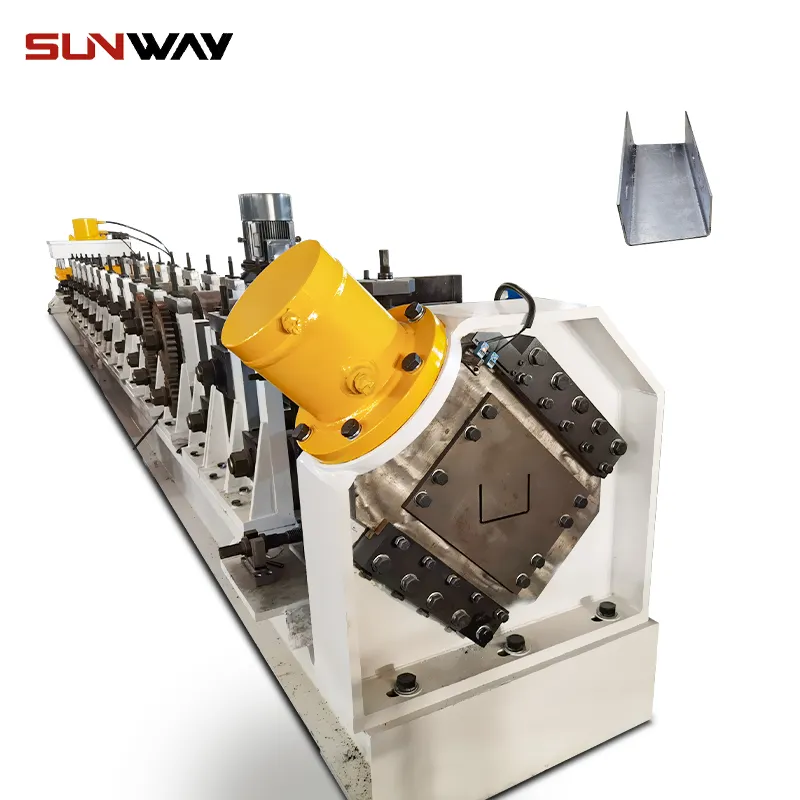
Industrial Applications of Rolling Shutter Roll Forming Machines
The versatility of rolling shutter doors translates into a wide range of applications for these machines. Here are some prominent examples:
- Securing Warehouses and Industrial Facilities: Rolling shutters provide a robust barrier to protect valuable equipment, inventory, and workspace from theft, vandalism, and weather damage.
- Securing Retail Storefronts: Many shops utilize rolling shutters for nighttime security, offering a visually appealing yet secure closure.
- Fire Doors: In specific configurations, rolling shutters can be fire-rated, providing an additional layer of protection in case of a fire emergency.
- Garage Doors: While sectional overhead doors dominate the residential market, rolling shutters offer a space-saving alternative for certain garage applications.
Choosing the Right Rolling Shutter Roll Forming Machine
Selecting the ideal machine depends on several factors. Here’s a roadmap to guide your decision:
- Machine Features: Consider features that improve efficiency and functionality, such as automatic punching for holes and slots, edge bending for added rigidity, and stacking systems for finished slats.
- Floor Space: Measure your available workspace and choose a machine that fits comfortably. Some machines are designed for smaller workshops.
- Maintenance Requirements: Think about the ease of maintenance and access to spare parts. Reliable after-sales service from the manufacturer is also important.
- Safety Features: Ensure the machine has proper safety guards and emergency stop buttons to prioritize operator safety.
-
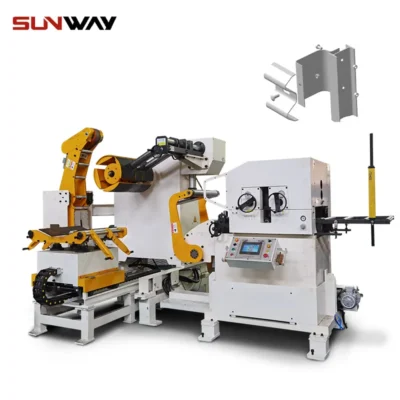 Highway Guardrail End Terminal Forming Machine
Highway Guardrail End Terminal Forming Machine -
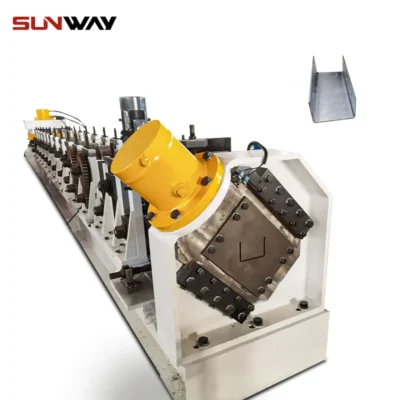 Highway U/C Post Roll Forming Machine
Highway U/C Post Roll Forming Machine -
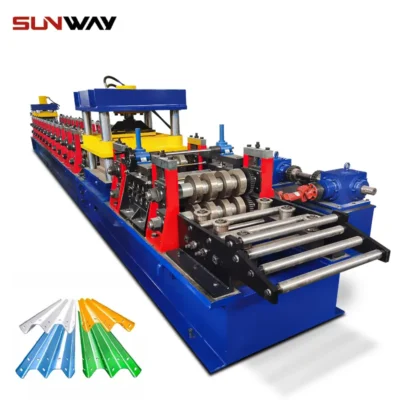 2 Waves Highway Guardrail Roll Forming Machine
2 Waves Highway Guardrail Roll Forming Machine -
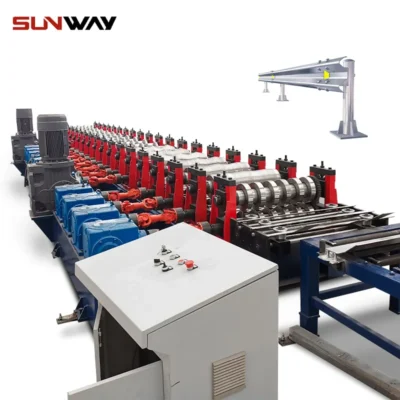 3 Waves Highway Guardrail Roll Forming Machine
3 Waves Highway Guardrail Roll Forming Machine -
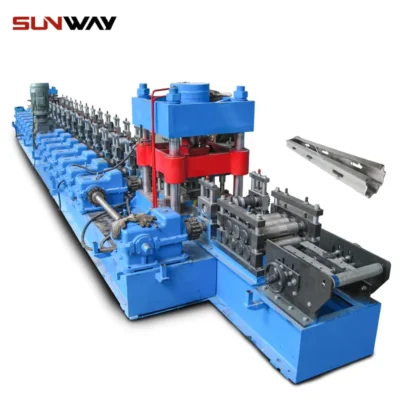 Vineyard Post Roll Forming Machine
Vineyard Post Roll Forming Machine -
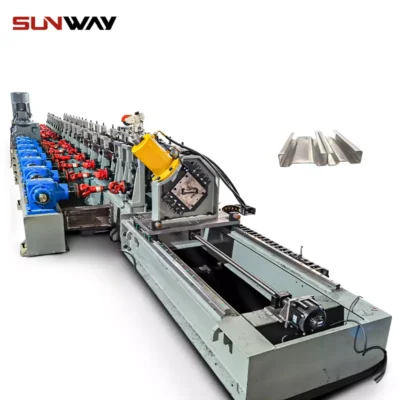 Auto Size Changeable Sigma Purlin Roll Forming Machine
Auto Size Changeable Sigma Purlin Roll Forming Machine -
 Auto Size Changeable C Z Purlin Roll Forming Machine
Auto Size Changeable C Z Purlin Roll Forming Machine -
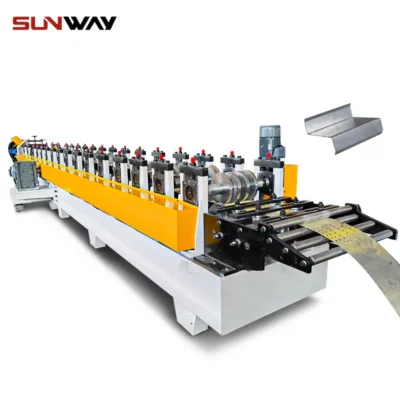 Auto Size Changeable Z Purlin Roll Forming Machine
Auto Size Changeable Z Purlin Roll Forming Machine -
 Auto Size Changeable C U Purlin Roll Forming Machine
Auto Size Changeable C U Purlin Roll Forming Machine
Advantages and Considerations of Rolling Shutter Roll Forming Machines
Advantages:
- Efficiency: These machines automate the production of rolling shutter slats, significantly increasing output compared to manual methods.
- Precision: The machines ensure consistent and accurate forming of the slats, leading to a high-quality finished product.
- Versatility: Many machines offer the ability to produce various slat profiles, catering to diverse needs.
- Reduced Labor Costs: Automation minimizes reliance on manual labor, potentially leading to cost savings.
Considerations:
- Initial Investment: The upfront cost of a rolling shutter roll forming machine can be significant.
- Floor Space: These machines have a footprint, so consider the available space in your facility.
- Maintenance: Like any machinery, regular maintenance is crucial to ensure optimal performance and longevity.
The Future of Rolling Shutter Roll Forming Machines
The future of rolling shutter roll forming machines is likely to see advancements in areas like:
- Increased Automation: We can expect further integration of automation for tasks like material loading and unloading.
- Smart Manufacturing: Machines may be equipped with sensors and data collection capabilities to optimize production processes and predict maintenance needs.
- Sustainable Materials: The industry may explore the use of more eco-friendly materials for rolling shutter slats.
In Conclusion
Rolling shutter roll forming machines are the backbone of the rolling shutter door industry. These machines offer a cost-effective and efficient way to produce high-quality rolling shutter slats, catering to a wide range of needs in commercial and industrial settings. As technology evolves, we can expect even more innovative and efficient machines to emerge in the future.
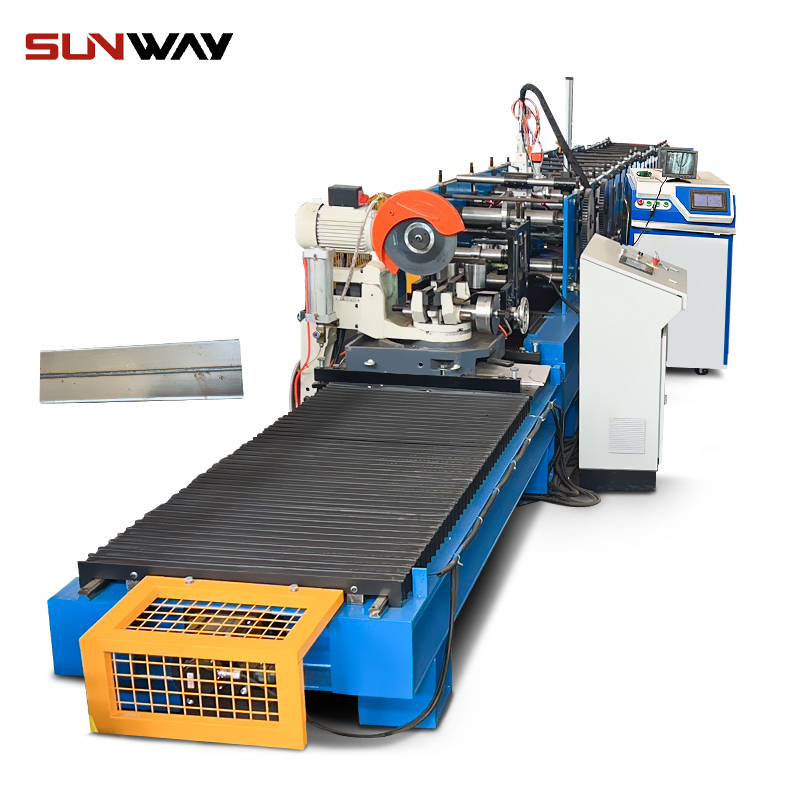
FAQ
What is a Rolling Shutter Roll Forming Machine?
A rolling shutter roll forming machine is a specialized type of metal forming machine used to continuously manufacture the slats (curtain sections) that make up rolling shutters. It does this by bending long strips of metal (typically steel) into the desired profile shape as it feeds through the machine.
How Does a Rolling Shutter Roll Forming Machine Work?
The machine typically consists of the following components:
- Decoiler: This unwinds the coil of metal sheet.
- Feeding and leveling device: This ensures the metal sheet feeds smoothly and flat into the forming stations.
- Roll forming system: This is the heart of the machine, consisting of a series of precisely shaped rollers that progressively bend the metal sheet into the final profile.
- Hydraulic post cutting: This unit cuts the formed shutter slat to the desired length.
- Run-out table: This table supports the finished shutter slats as they exit the machine.
- Hydraulic station: This powers the hydraulic components of the machine.
- PLC control system: This programmable logic controller manages the entire operation of the machine.
What are the Benefits of Using a Rolling Shutter Roll Forming Machine?
- Efficiency: These machines can continuously produce large quantities of rolling shutter slats at high speeds.
- Accuracy: The rollers ensure consistent and precise profiles for each slat.
- Reduced Labor: The machines are automated, reducing reliance on manual labor.
- Material Savings: Roll forming offers minimal material waste compared to other methods.
- Versatility: These machines can be designed to produce a variety of rolling shutter profiles.
What are some things to consider when choosing a Rolling Shutter Roll Forming Machine?
- Production Capacity: How much and how fast do you need to produce rolling shutters?
- Material Thickness: The machine should be capable of handling the thickness of metal you plan to use.
- Desired Shutter Profiles: Ensure the machine can produce the specific profiles you need.
- Machine Features: Consider additional features you may need, such as punching holes for fasteners.
- Budget: Rolling shutter roll forming machines can vary significantly in cost.
Frequently Asked Questions (Supplemental)
1) Which materials and thicknesses work best for rolling shutter slats?
- Pre-painted galvanized steel (PPGI) 0.5–1.0 mm and aluminum 0.7–1.2 mm are common. Stainless steel is used for coastal or hygiene-critical sites. Match machine roll design and motor power to your max thickness to avoid edge cracking or springback.
2) How do I eliminate “rattling” and poor interlock fit in finished shutters?
- Check pass progression and roll gap uniformity, verify slat hook dimensions against tooling prints, and stabilize line speed before the post-cut. Use inline calipers or laser gauges to confirm crown and hook tolerances ±0.15 mm.
3) What’s the ideal cut-off system for premium finishes?
- Servo flying shear with hardened blades and anti-scratch support pads. For color-coated coils, add polyurethane rollers and dry-film lubricants; target length tolerance ±0.8–1.0 mm at 20–35 m/min.
4) Can one Rolling Shutter Roll Forming Machine produce both insulated and non-insulated slats?
- Yes, with a foam-in-place or insert station and appropriate profile tooling. Ensure added weight is reflected in motor/gearbox sizing and that cut-off timing compensates for foam expansion.
5) What preventive maintenance reduces unplanned downtime most?
- Monthly roll alignment checks, blade regrind by cycle count, gearbox oil analysis every 2,000 hours, encoder recalibration, and cleaning of punching/embossing slug paths. Implement vibration and thermal monitoring on main stands and the shear.
2025 Industry Trends for Rolling Shutter Roll Forming Machines
- AI-driven setup assistants are reducing trial runs by recommending pass gaps and guide positions from coil certificates.
- Inline QC is standardizing: laser width/edge monitoring and camera-based scratch detection feed SPC dashboards.
- Energy-efficient drives and regenerative braking lower kWh/ton, supporting ESG reporting and utility rebates.
- Quick-change cassettes cut profile changeovers below 45–75 minutes, enabling short-run, high-mix production.
- Safety by design: validated safety PLCs (ISO 13849-1, PL d/e), light curtains, and guided LOTO procedures are becoming mandatory for global buyers.
Benchmarks and Adoption (2023 vs 2025)
| Metric | 2023 Typical | 2025 Best-in-Class | Relevance | Source/Notes |
|---|---|---|---|---|
| Line speed (color-coated steel, mm range) | 12–20 m/min | 25–35 m/min | Higher throughput without marring finish | OEM brochures; The Fabricator https://www.thefabricator.com |
| Changeover time (profile/cassette) | 2–3 h | 45–75 min | Less downtime for retailers’ custom slats | Industry field data |
| First-pass yield | 95–97% | 98–99% | Fewer jams/interlock defects | SPC programs, ISO 22514 https://www.iso.org |
| Unplanned downtime | 8–12% | 3–5% | PdM sensors predict failures | McKinsey on PdM https://www.mckinsey.com |
| Energy intensity (kWh/ton) | 110–150 | 85–115 | Cost and ESG gains | World Steel Association https://worldsteel.org |
Note: Best-in-class assumes servo flying shear, inline measurement, trained operators, and consistent coils.
Latest Research Cases
Case Study 1: AI Setup + Inline Vision Cuts Scrap in Shutter Lines (2025)
Background: A retail door OEM produced 12 shutter profiles with frequent color changes; first-coil scrap and surface scratches raised costs.
Solution: Implemented AI-assisted pass setup, laser width gauges, and camera-based scratch detection; upgraded to servo flying shear with anti-scratch supports.
Results: First-pass yield improved from 96.2% to 98.9%; changeover time dropped from 122 to 68 minutes; surface-scratch defects reduced 60%; annual energy use per ton fell 12%.
Case Study 2: PdM Prevents Shear Failure in Aluminum Shutter Production (2024)
Background: An exporter running 0.9–1.1 mm aluminum slats had unpredictable shear stoppages.
Solution: Added vibration/temperature sensors to shear gearbox and bearings; adopted oil condition monitoring; introduced blade life tracking by cut count.
Results: Unplanned downtime decreased from 10% to 4.1%; blade life extended 28%; on-time delivery improved by 6 percentage points.
Expert Opinions
- Mike Wrasman, Technical Director, Roll-Kraft
Viewpoint: “Roll parallelism and correct pass progression are fundamental. Most interlock fit issues trace back to uneven roll gaps or worn radii.” Source: https://www.roll-kraft.com - Dr. Elena Kovacs, Senior Lecturer in Metal Forming, TU Wien
Viewpoint: “Color-coated coils demand careful control of contact pressures and support materials to avoid micro-scratching—especially at higher line speeds.” Source: https://www.tuwien.at - Priya Desai, Functional Safety Engineer, TÜV SÜD
Viewpoint: “Integrate validated safety PLCs to ISO 13849-1 and formalize LOTO for jam clearing; changeovers are the highest-risk task window.” Source: https://www.tuvsud.com
Practical Tools and Resources
- The Fabricator Knowledge Center (troubleshooting guides for roll forming): https://www.thefabricator.com
- Roll-Kraft Resource Center (tooling, setup, diagnostics): https://www.roll-kraft.com/roll-forming-resource-center
- Keyence and Cognex (inline laser measurement and vision for surface/edge monitoring): https://www.keyence.com | https://www.cognex.com
- ifm moneo and Hansford Sensors (predictive maintenance hardware/software): https://www.ifm.com | https://www.hansfordsensors.com
- ISO Standards (safety/quality: ISO 13849, ISO 22514 series): https://www.iso.org
- World Steel Association (energy and sustainability benchmarks): https://worldsteel.org
Optimization checklist for a Rolling Shutter Roll Forming Machine:
- Verify decoiler alignment and loop control; deburr and tape the coil lead edge for painted coils.
- Load correct “recipe” for material/thickness; confirm pass gaps and guide positions.
- Use anti-scratch supports and clean rolls for color-coated material; maintain roll roughness ≤ Ra 0.8 μm.
- Calibrate encoder and shear timing monthly; track blade cycles and regrind proactively.
- Monitor PdM dashboards for vibration/temperature thresholds; schedule service before alerts escalate.
- Audit safety interlocks quarterly; train operators on standardized changeover SOPs.
Citations and references:
- The Fabricator: Roll forming best practices https://www.thefabricator.com
- McKinsey: Predictive maintenance in manufacturing https://www.mckinsey.com
- World Steel Association: Energy benchmarks and reports https://worldsteel.org
- ISO: Safety and quality standards https://www.iso.org
Target keyword usage examples:
- Upgrading a Rolling Shutter Roll Forming Machine with servo flying shear and inline vision can increase throughput while protecting color-coated finishes.
- Predictive maintenance on a rolling shutter roll forming line reduces unplanned downtime and stabilizes interlock tolerances.
Last updated: 2025-10-24
Changelog: Added 5 supplemental FAQs, 2025 trend analysis with benchmark table, two recent case studies, expert viewpoints with sources, tools/resources, and an optimization checklist tailored to Rolling Shutter Roll Forming Machines.
Next review date & triggers: 2026-05-20 or earlier if major OEMs release new quick-change cassettes, ISO safety revisions publish, or inline QC/AI setup tools reach mainstream adoption.
